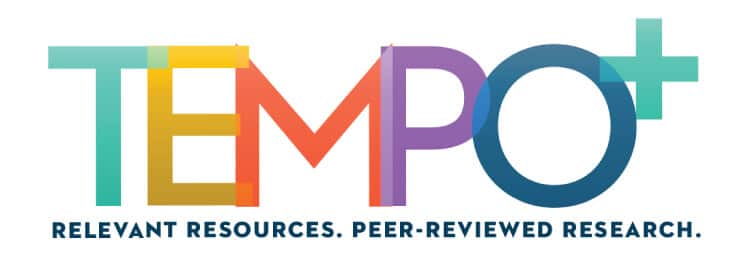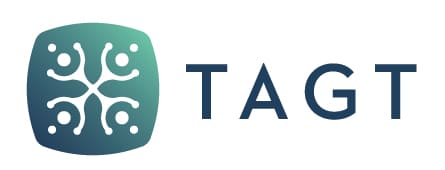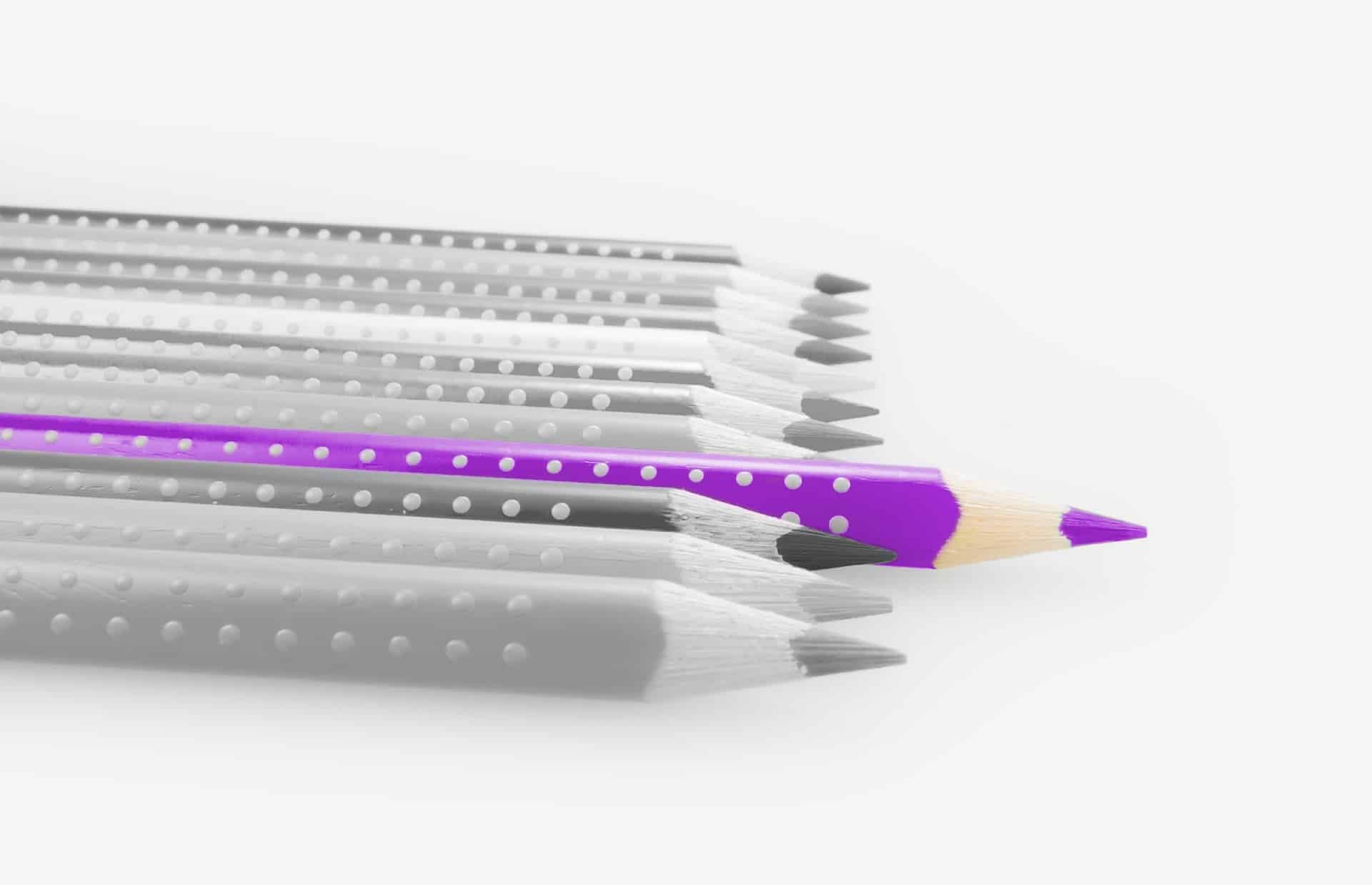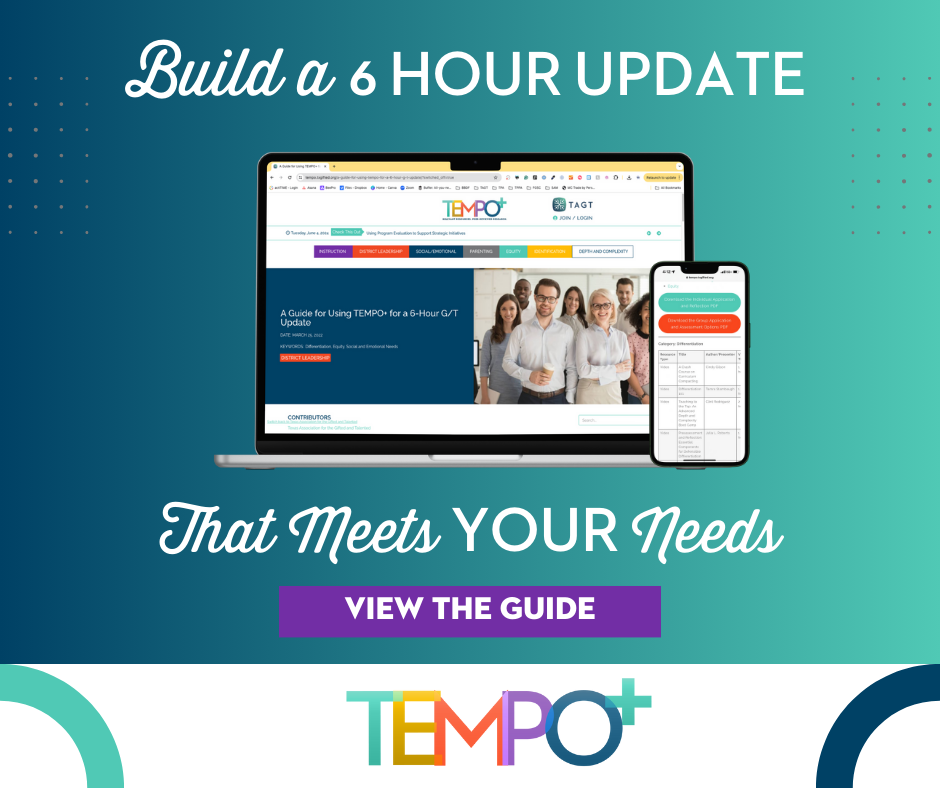Twice-exceptional gifted learners are a unique subpopulation within the microcosm of those learners with gifts, talents, and high abilities. One special population within the group of highly able children consists of gifted children who also have Attention Deficit/Hyperactivity Disorder (GT/ADHD). These learners are smart and recognize their innate cognitive abilities, talents, and creativity, but they also experience much dissonance and can doubt themselves on a daily basis. Many experience self-talk that goes something like this:
- If I’m so smart, why do I always forget/lose things?
- If I’m so smart, why do I always blurt out the wrong things at the wrong time?
- If I’m so smart, why does it take me so long to write a paper, finish a book, or complete a project?
- If I’m so smart, why do the ideas inside my head skip from one topic to another?
- If I’m so smart, why do I start (but not complete) three separate sentences at the same time?
- If I’m so smart, why do I worry about everything all of the time?
- If I’m so smart, why can’t I do the things the adults in my life want me to do (e.g., turn in assignments on time, keep my room organized, pay attention to things that are boring, etc.)?
These conversations originate because of the duality of the advanced cognitive and intense/sensitive affective nature germane to giftedness, which occurs alongside executive functioning skills that have gone astray. These internal conversations may cause those who are GT/ADHD to wrestle with developing a positive self-concept, and their self-esteem may waver as if it were on a roller coaster ride at a theme park. These students can recognize the dissonance within themselves, and this recognition causes them angst, which can activate a whole new set of symptoms, such as depression or anxiety (Masi & Gignac, 2015). Many of these children do not perform at levels high enough to be identified for gifted programs because of this internal paradox resulting from gaps in executive functioning from ADHD. They often underachieve if identified for gifted programs and experience life in a perpetual state of “Where do I belong?”
Executive Functioning/ADHD
According to Kaufman (2010), “executive skills are those elements of cognition that allow for the self-regulation and self-direction of our day-to-day and long-term functioning” (p. 2). Both of the core strands of executive functioning—metacognitive and social-emotional—engage with and can impact both the students’ ability to demonstrate advanced cognitive abilities of giftedness and cope with the intense and sensitive nature that goes hand-in-hand with the social and emotional characteristics of giftedness. The interaction of the strands of executive functioning plays a role in information processing for those with this dual exceptionality.
According to Gioia, Isquith, and Guy (2001; as cited in Kaufman, 2010), the skills within the metacognitive strand of executive functioning consist of comprehension of information and planning, starting, and completing tasks, which can steer an individual in a variety of ways. The metacognitive abilities allow for purposeful attention, selection and management of the strategies needed for understanding and recall, identification of goals for learning and completion of assignments, planning and organization of tasks before starting them, the ability to gauge the quality of progress along the way, and the ability to revise when necessary. Additionally, the purpose of the social-emotional strand of executive functioning is to act as a modulator that limits, guides, or directs affective aspects needed for conducting business or balancing social activities in the day-to-day world. Response inhibition/impulse control, emotional control, and adaptability are the elements within the social-emotional arena that can lead to gaps in metacognitive functioning for those with ADHD (Kaufman, 2010).
Response inhibition/impulse control is considered to be at the top of the list of executive functioning skills, and all humans experience varying degrees of ability in this skill. Humans, especially when under pressure, often say or do things they wish to retract. Someone with ADHD experiences this phenomenon more frequently and/or with greater consequences. Emotional control, response inhibition/impulse control’s cousin, allows us to restrain many emotions that occur both externally and internally. Those who have ADHD often don’t understand why people do not respond in the way they anticipate to what they say or do. These episodes of misunderstanding accumulate and erupt inappropriately, at a more frequent rate, or with more intensity than for those without ADHD.
The relationship between all of these strands or elements of executive skills come together and intervene in the ways that information is processed. When attention is not focused adequately, the information that enters short-term memory is incomplete or distorted. As this incomplete information progresses into working memory, both auditory/verbal and visual/nonverbal information may be distorted because of the distorted input. Therefore, the working memory or “cognitive workshop” is unable to transmit and store accurate data needed for learning in the long-term memory of the brain. ADHD impacts individuals through the accumulation of incomplete data (resulting from data not fully processed in the “workspace”) affecting long-term memory, the output or products generated in the process, and the ability to retrieve that information (Kaufman, 2010).
Giftedness
Clark (2013) provided a comprehensive collection of gifted traits organized according to the following domains: cognitive function, affective function, and physical/sensing function. Although all three domains of gifted functioning can be impacted by the metacognitive and social/emotional impacts of deficits in executive functioning, the focus here will be on the first two: cognitive and affective functioning. Table 1 shows a crosswalk of characteristics of ADHD and of giftedness, showing how concomitant issues can result for individuals with giftedness and ADHD.
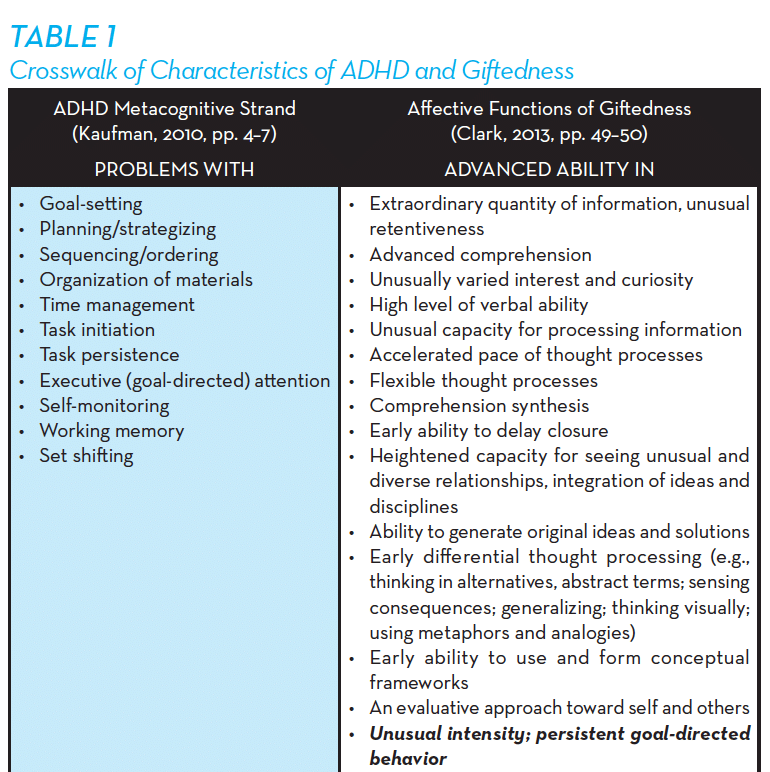

The combination of the cognitive and affective traits of giftedness alone can be the source of concomitant problems for gifted learners. For example, when a gifted child’s high level of verbal ability results in his or her “domination of discussions with information and questions deemed negative by teachers and fellow students” (Clark, 2013, p. 47) and is coupled with the affective trait of having an “unusual sensitivity to the expectations and feelings of others” (Clark, 2013, p. 49), there is internal dissonance. A gifted learner does not understand the resulting “vibes” generated by those who do not understand the connections made by the gifted learner nor the gifted student’s intensity and need to be heard. When this occurs too many times, the gifted learner may select isolation as a form of coping with the dissonance.
Twice-Exceptional Gifted/ADHD
In addition to gifted learners’ vulnerability based upon their gifts and talents in the cognitive and affective domains, imagine the additional internal dissonance those learners deal with while struggling significantly and often without adequate adult support. The roller coaster ride they attempt to deal with creates an additional layer of complications, resulting from the lack of understanding of the impact of malfunctioning executive skills in metacognitive areas and the social-emotional impacts of executive functioning skills, such as response inhibition/impulse control, emotional control, and adaptability (Kaufman, 2010).
Of particular interest in this tango of twice-exceptionality is a characteristic trait common to both cognitive and affective functions of giftedness—intensity. In the cognitive domain, intensity is revealed as “Unusual intensity; persistent goal-directed behavior” (Clark, 2013, p. 48). Likewise, in the affective domain, intensity appears once again in the list as, “Unusual emotional depth and intensity” (Clark, 2013, p. 49). In a twice-exceptional child, it is often difficult to determine if this intensity is the “H” in the acronym of ADHD, or the dance that results from the impact of interaction of the developmental domains of giftedness. Dealing with intensity is something twice-exceptional gifted learners need help with in order to modulate the twists and turns of life’s roller coaster ride, regardless of whether the intensity is due to cognitive and affective functions of giftedness or gaps in executive skills.
Supporting the Twice-Exceptional Learner
Regrettably, many adults, including teachers, are unaware that a child or adolescent can be bright and capable and also struggle with ADHD. Those who are GT/ADHD often hear the adults in their lives mirror or model the statements similar to their own internal dialogue. Many parents of these bright and able-minded youth are GT/ADHD themselves and have spent their lives without adequate understanding of themselves and without any idea of how to support their children. Teachers without any training in gifted education or teachers who have never heard of twice-exceptional gifted children are often perplexed by these learners, don’t identify them for gifted services, and focus on the learners’ struggles while ignoring their strengths.
These learners present a unique challenge in classrooms. In turn, schools provide a unique challenge to GT/ADHD learners. Helping these learners develop good self-concepts and self-esteem is not an easy task, and as with all populations of twice-exceptional learners, solutions for righting the trajectory of these learners are as unique as the learners themselves. There are no recipes, instant cures, or formulas that can be applied across the board for helping GT/ADHD learners. However, the following suggestions can make a significant difference.
The best and first thing parents and teachers can do for GT/ADHD learners is to help them realize that they are not broken and are not in need of being fixed. Helping them accept themselves—both their strengths and struggles—is key to students being able to silence the destructive inner conversations that are so detrimental. Once this self-realization occurs, the damaging internal conversations can be replaced with comments that will allow them to blossom into who they can become.
Van Gerven (2018) described some helpful tips for teachers that can improve the classroom learning environment for GT/ADHD learners. She suggested the following:
- apply the KISS acronym: Keep it Simple and Small approach to remediation strategies;
- lose the need for a label;
- stimulate, compensate, remediate, and dismiss (StiCoRDi); and,
- respect the disability as equally as you respect the IQ (pp. 8–9).
StiCoRDI, according to van Gerven (2018) and van Gerven and Troxclair (2017), is an acronym to remind educators to “stimulate” the use of both strengths and weaknesses with GT/ADHD learners. Often, a task that displays a student’s weakness results in avoidance behavior. When this occurs, teachers need to challenge the student (stimulate) to try the task using one of their areas of strengths. Teachers can help the learner compensate or cope with their areas of struggle by providing the student with the scaffolding needed. In addition to modifying the learning environment, gifted learners’ advanced cognitive abilities can be used to reinforce their understanding of many aspects of their gaps in executive skills via appropriate instructional strategies.
One way to help these learners with this transformation is to teach them about neurodiversity. According to The National Symposium on Neurodiversity at Syracuse University (n.d.), “neurodiversity is a concept where neurological differences are to be recognized and respected as any other human variation. These differences can include those labeled with Dyspraxia, Dyslexia, Attention Deficit Hyperactivity Disorder, Dyscalculia, Autistic Spectrum, Tourette Syndrome, and others” (para. 1). It is very acceptable and even politically correct to recognize diversity related to ethnicity, national origin, socioeconomic status, race, etc. As such, the concept of neurodiversity fits into this spectrum of diversity that I have always personally labeled as cognitive diversity.
The first step in accommodating those with neurodiverse traits is to create the right “fit” for them in classrooms. A proper learning environment is essential in order for all learners to be successful, but being in a learning environment that meets the needs of GT/ADHD and other neurodiverse populations reaches far beyond the basic essentials provided in most general education classrooms, or even in classrooms in which gifted learners are provided special services. Twice-exceptional gifted children can learn more about themselves as they investigate the content surrounding neurodiversity.
A common error in addressing the needs of twice-exceptional gifted learners is to only address the “struggles” these students encounter using remediation tactics. Strategies known to stimulate the development of gifts and talents need to be used with these learners to address their understanding of the struggles they encounter with ADHD issues.
Honeybourne (2018) provided information about neurodiversity appropriate for elementary/middle school children to begin an investigation of the concept. After an introduction to neurodiversity, Honeybourne made a case for understanding neurodiversity, and discussed the importance of communication, teaching and learning, and student well-being. Creating the right learning environment and a whole-school approach appropriate to all neurodiverse populations is part of the solution to supporting neurodiverse learners. Teachers can digest and integrate the ideas found in this book to introduce the concept of neurodiversity with GT/ADHD learners.
An instructional model that provides support for the development of coping skills within gifted learners is Betts’s (Betts, Carey, & Kapushion, 2017) Autonomous Learner Model. The components of this model include student-driven activities arranged within the following components: orientation, individual development, enrichment, seminars, and in-depth study. Embedded within two components of this model—orientation and individual development—are two overlapping strategies that are appropriate for gifted learners. Those strategies are thematic, interdisciplinary, conceptual units and independent study (Karnes & Bean, 2015). Figure 1 represents an initial schematic for creation of a thematic interdisciplinary conceptual unit on neurodiversity.

Betts et al.’s (2017) model has as its objective learner empowerment, which is exactly what twice-exceptional gifted learners require to escape from the wrestling match occurring inside their minds. Several of the strategies described by Betts et al. provide great vehicles for delivery of information for GT/ADHD gifted learners to become more comfortable with their gifts, including:
- a pre-/postassessment of the understanding of giftedness, talent, intelligence, and creativity;
- group-building activities, self/personal development activities;
- activities that provide opportunity for inter-/intrapersonal development;
- activities that focus on creative learning skill development which span the range of thinking; and,
- the use of technology to improve organization skills.
Additionally, students can learn about their neurodiversity via seminars and/or in-depth studies. Betts et al. described a seminar as a “short-term project for learners to pursue in small groups of three to five members, who research a topic, prepare the seminar, and present the interactive seminar to classmates or even community members” (p. 243). They shared five categories of seminars: futuristic, problematic, controversial, general interest, and advanced knowledge. In this case, a seminar on neurodiversity could be considered a controversial seminar or an advanced knowledge seminar.
An in-depth study provides for learning at its most advanced level. “Students define a passion area, develop a series of steps to be followed to access their goals and participation in the study. In-depth studies conclude with the learners presenting their findings to the other members of their learning communities” (Betts et al., 2017, p. 267).
Conclusions
Serving both the students’ strengths and weaknesses is vital to supporting the duality of the twice-exceptional learner (Reis, Baum, & Burke, 2014). Remediation of either executive skills alone or strengthening of advanced cognitive and affective development does not adequately address the needs of this special subpopulation of gifted learners. Consistently attending to both struggles and strengths can also reduce the internal dissonance and the internal paradoxical chatter GT/ADHD learners experience.
Given the right environment and instructional strategies, paradoxical questions of “If I’m so smart, why do I . . .?” can be answered, and affirmations can be constructed. Questions such as “If I’m so smart, why do I always forget/lose things?” shift to a self-accepting affirmation or acknowledgment, such as “Losing things does not mean I am dumb or stupid. I forget or lose things because I am not paying enough attention to adhering to my organizational strategies/plans. I need to pay more attention to where I place important items.”
Providing GT/ADHD learners with information about the duality of their neurodiversity via the use of appropriate remediation strategies, coupled with providing the opportunity to gain knowledge and understanding of their neurodiversity via the use of applicable gifted education strategies, will be a lifelong gift that will assist these learners in self-actualization.
References
Betts, G. T., Carey, R. J., & Kapushion, B. M. (2017). Autonomous Learner Model resource book. Waco, TX: Prufrock Press.
Clark, B. (2013). Growing up gifted: Developing the potential of children at home and at school (8th ed.). Boston, MA: Pearson.
Gioia, G. A., Isquith, P. K., & Guy, S. C. (2001). Assessment of executive function in children with neurological impairment. In R. J. Simeonsson & S. L. Rosenthal (Eds.), Psychological and developmental assessment: Children with disabilities and chronic conditions (pp. 317–356). New York, NY: Guilford Press.
Honeybourne, V. (2018) The neurodiverse classroom: A teacher’s guide to individual learning needs and how to meet them. London, UK: Kingsley.
Karnes, F. A., & Bean, S. M. (Eds.). (2015). Methods and materials for teaching the gifted (4th ed.). Waco, TX: Prufrock Press.
Kaufman, C. (2010). Executive function in the classroom: Practical strategies for improving performance and enhancing skills for all students. Baltimore, MD: Brookes.
Masi, L., & Gignac, M. (2015). ADHD and comorbid disorders in childhood psychiatric problems, medical problems, learning disorders, and developmental coordination disorders. Clinical Psychology, 1(1), 1–4
The National Symposium on Neurodiversity at Syracuse University. (n.d.) What is neurodiversity? Retrieved from https://neurodiversitysymposium.wordpress.com/what-is-neurodiversity
Reis, S. M., Baum, S. M., & Burke, E. (2014). An operational definition of twice-exceptional learners: Implications and applications. Gifted Child Quarterly, 44, 152–170.
Van Gerven, E. (2018). Addressing the needs of twice-exceptional students in the regular classroom. Almere, The Netherlands: Slim Educatief.
Van Gerven, E., & Troxclair, D. (2017). Theory to practice: Classroom strategies to support gifted students with ADHD. Presentation at the 2017 Council for Exceptional Children Conference, Boston, MA.
Debra A. Troxclair, Ph.D., associate professor at Lamar University, teaches undergraduate and graduate special education courses and gifted education courses in the Teacher Education Department at Lamar. She has more than 20 years of experience teaching at the K–12 level, as well as training graduate students in gifted and special education at the university level. She has supervised summer programs for gifted children and has publications on a variety of gifted education topics. She served on the Board of Directors for the Texas Association for the Gifted and Talented and currently serves the Council for Exceptional Children (CEC) TAG Division.
